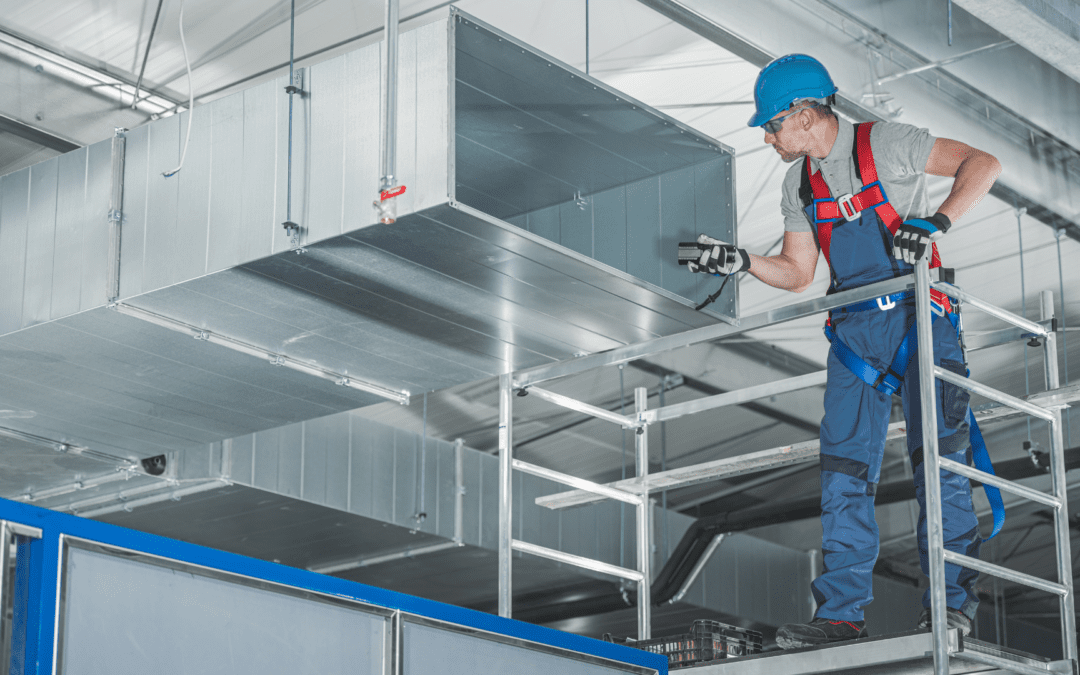Selecting the ideal HVAC system for your commercial building is a significant decision that impacts not just the comfort and well-being of the occupants but also the efficiency and sustainability of your facility. At Independent Air Conditioning Solutions (IACS), we understand the difficulties involved in finding the perfect HVAC solution tailored to your specific needs.
This guide is designed to walk you through the critical considerations and options available, ensuring that your choice aligns with your goals for energy efficiency, cost-effectiveness, and environmental responsibility. Let’s dive into understanding your requirements and exploring the types of HVAC systems that could be the best fit for your commercial building.
Understand your requirements
Selecting the optimal HVAC system for a commercial building is crucial for balancing comfort, energy efficiency, and cost. Here’s an overview of the essential factors to consider:
Building size and layout: A system that’s too small won’t heat or cool efficiently, while one that’s too large can increase energy consumption and costs. Larger or complex layouts may require multiple units or more sophisticated systems to ensure even distribution of heating and cooling across different zones.
Occupancy and usage patterns: Systems that can adapt to variable occupancy levels, such as those in hotels or conference centres, are vital. Look for systems with programmable settings or smart controls that adjust operation based on actual usage to save energy without sacrificing comfort.
Climate considerations: Choose a system that’s efficient for your local climate. In extreme cold or hot regions, prioritising systems with high efficiency and effective insulation is crucial. Additionally, consider the humidity levels and choose systems that can maintain comfortable indoor air quality.
Energy efficiency goals: Opt for systems with high energy efficiency ratings if reducing energy consumption and environmental impact are priorities. Energy Star certified or systems with high SEER (cooling) and HSPF (heating) ratings can offer significant savings on energy bills over time.
Budget constraints: While initial costs are important, consider the total cost of ownership, including long-term energy and maintenance expenses. High-efficiency systems might have higher upfront costs but can result in lower operational costs, making them a more cost-effective choice in the long run.
Types of HVAC systems
Choosing the right HVAC system for a commercial building involves understanding the options available and aligning them with the building’s specific needs. Here’s an overview of various HVAC systems, tailored for different building sizes and requirements:
Single split systems: Best suited for small commercial buildings, single split systems are cost-effective and straightforward to install. Each unit independently serves a single room, providing individual control over the temperature. However, for multiple rooms, several units are needed, requiring more space for both indoor and outdoor components.
Multi-split systems: These systems build on the single split system concept but allow multiple indoor units to connect to a single outdoor unit. This configuration reduces the need for outdoor space, making multi-split systems suitable for buildings with limited external areas. They offer flexibility for small to medium-sized buildings where individual room control is desired without the extensive outdoor unit space requirements.
Variable refrigerant flow (VRF) or variable refrigerant volume (VRV): VRF/VRV systems provide precise temperature control to different areas within a building, making them ideal for medium to large-sized commercial spaces with diverse heating and cooling needs. These systems are highly efficient, allowing for simultaneous heating and cooling in different zones, and are well-suited to buildings with varying occupancy and usage patterns.
Centralised systems: Ideal for larger commercial or industrial buildings, centralised systems incorporate central chillers, boilers, and air handling units to provide heating and cooling. These systems are efficient over large spaces and simplify maintenance by centralising HVAC components. However, they require significant upfront investment and space for equipment, making them more suitable for new constructions or major renovations.
Consider energy efficiency
Energy efficiency is a critical factor in choosing an HVAC system. Look for systems with high Seasonal Energy Efficiency Ratio (SEER) and Energy Star ratings. These not only reduce the building’s carbon footprint but also lead to significant savings on energy bills over time.
Moreover, systems with advanced energy-saving features, such as programmable thermostats or smart technology integration, can offer additional operational efficiencies. These technologies enable more precise control over heating and cooling, further optimising energy use and reducing unnecessary expenditure.
Installation and maintenance
The complexity of installation and ongoing maintenance requirements are also important considerations. Ensure that the system you choose can be supported by local HVAC professionals and that regular maintenance is feasible in terms of cost and downtime.
A system that is easier to install and maintain can significantly reduce initial setup times and long-term operational disruptions. Additionally, consider the availability of service contracts and warranties that can help manage maintenance costs and ensure the system’s reliability and performance over its lifespan.
Conclusion
Choosing the right HVAC system is crucial for the operational efficiency, comfort, and sustainability of your commercial building. By considering factors such as building size and layout, occupancy patterns, climate, energy efficiency goals, and budget, you can make an informed decision that meets your immediate and long-term needs.
At IACS, we’re committed to helping Australian businesses in Perth, Brisbane and Melbourne find the most efficient and effective air conditioning solutions. Whether you’re interested in single-split systems, multi-split systems, VRF/VRV, chilled beams, or centralised systems, we have the expertise to guide you through the selection process. Get in touch with our team today—-let us help you achieve the perfect environment for your commercial building.

